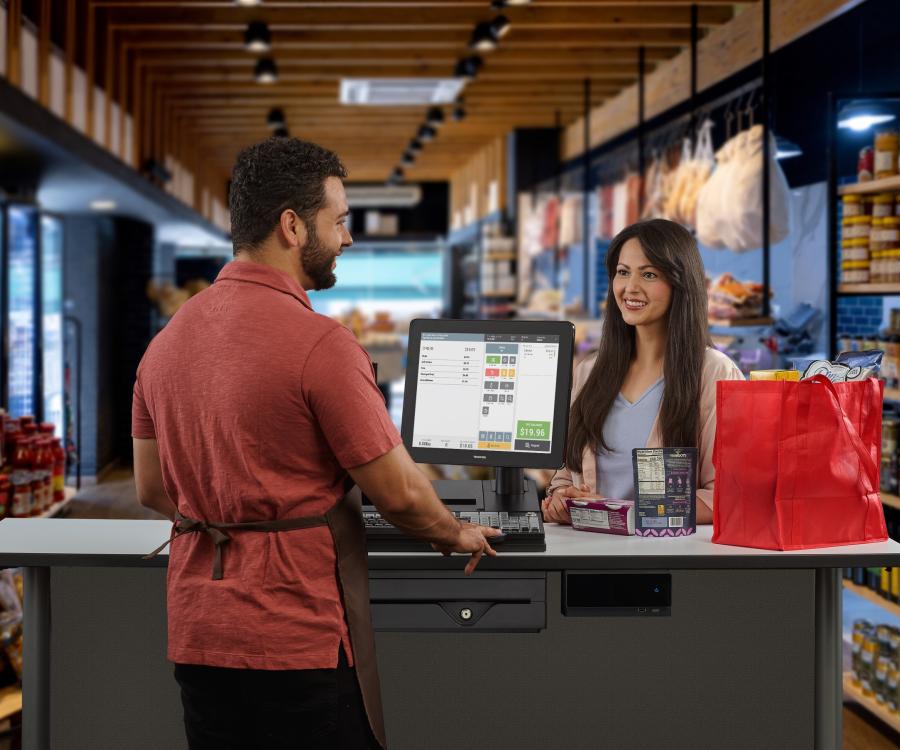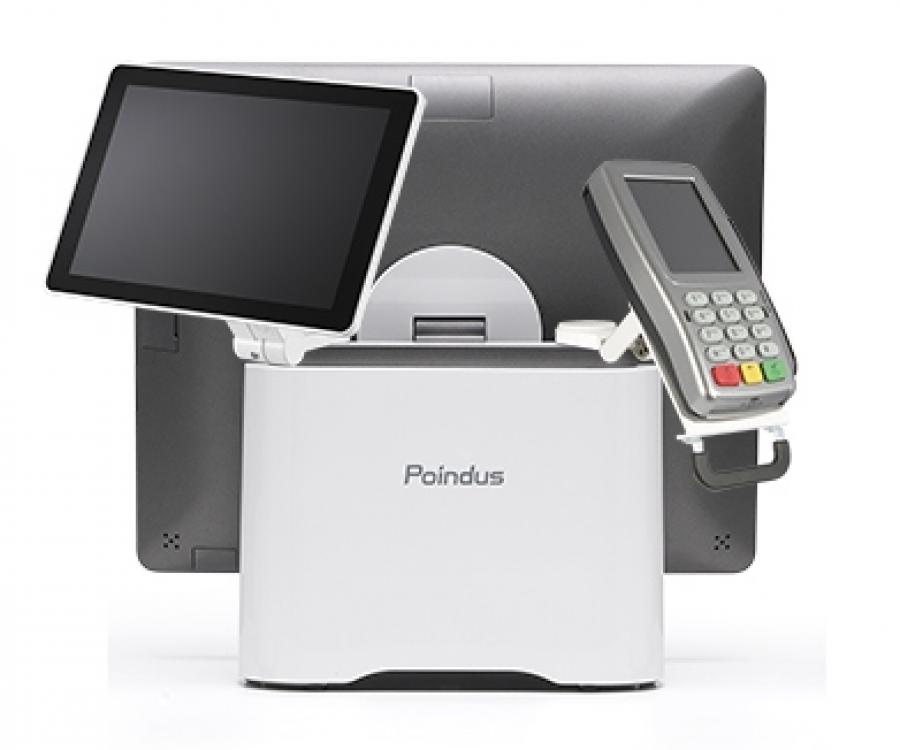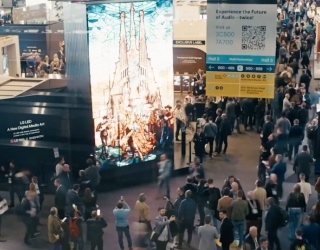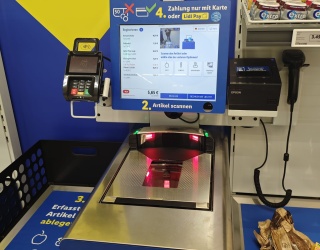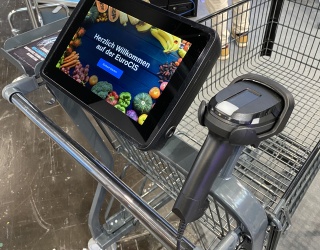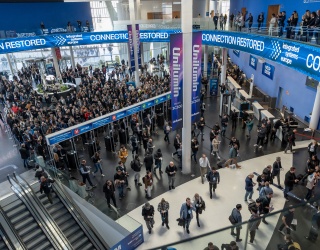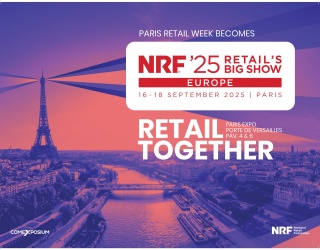If you want to outfit a cashier station with new equipment, it’s not just technical data that counts. Software and service are often a deciding factor, because breakdowns are costly. Does the new equipment fit in with the old? Is the trend toward one-stop-service or does this increase the dependency on one provider? Which service level makes sense for which customer? We asked IBM and talked with Thomas Hahn, Division Manager Point of Sale Maintenance Services and Hildegard Gerhardy, in charge of new retail store solutions.
At the EuroCIS each year the latest in the IT world takes center stage. At some specialty retailers, like bakeries or hair salons, you often still see very outdated cash registers and receipt printers. Is that a wrong impression or is there a gap between large and small retailers when it comes to modernization?
Hildegard Gerhardy: I don’t think you can say that: There are definitely small retailers or companies who use innovative technologies early on. Just like the big companies they understand the kind of competitive advantage they can achieve by using modern point-of- sale technology. Their customers definitely appreciate and expect the use of modern technology. To some extent it is often particularly the smaller companies that venture out and don’t just wait to see what kind of new solutions big companies bank on. In the fashion sector for example, small retailers use many new possibilities like pay- by-fingerprint.
Even at some chain stores individual devices have a long life and yet these stores invest in new IT. Where are the biggest interface problems?
Hildegard Gerhardy: Interface problems generally only exist if retailers use proprietary or self-contained systems. IBM cash registers are built on standard technology. By request, IBM today delivers all cash registers with a Linux operating system, which clearly emphasizes the openness of systems. Through our intensive collaboration with many business partners, particularly with ISVs (independent software vendors), we have made excellent experiences in terms of homogenizing. Software is left very open today, to make integration into many systems and applications possible.
One source – is this the trend in terms of support, even if not all instruments are from one manufacturer? Or do retailers fear dependency?
Thomas Hahn: A good service provider needs to be able to deal with various systems and provide non-proprietary service. The equipment is getting more and more complex and multifaceted. Consequently, the maintenance is increasingly getting more sophisticated. By commissioning one single service provider, a retailer can realize uniform support processes, harmonized running periods and less coordination efforts. The time and effort he invests in internal IT significantly decreases. By eliminating interface time, effort and costs can also be reduced. We find that customers view one-stop support as an advantage.
IBM, Wincor, Toshiba – you all used to be the big hardware suppliers. How large is the percentage of software, support and training in your business today?
Hildegard Gerhardy: IBM is still one of the largest point-of-sale manufacturers. Worldwide we sold more than five million point-of-sale systems over the past 35 years. More than 2.5 million of these are still installed. Today our customers increasingly ask for solutions. This means, the sale is preceded by a comprehensive consultation to then choose the individual coordinated selection of hardware, operating systems and business applications. A connection to inventory control and existing systems plays an ever increasingly important role. The portion of different peripherals – for example mobile handhelds – also keeps growing more and more. Overall we can say that the service portion over the past years has played an ever more important role in the portfolio mix. Especially the demand in retail on the availability of branch technology has led us to continuously expand our service share in this field.
A service contract is an insurance against emergencies. How can retail avoid incidences?
Thomas Hahn: A maintenance contract for branch technology is far more than just the assurance that a defective component is repaired again. Through preventive measures and remote service, a good service provider increases the availability of store infrastructure. To prevent revenue- and image losses, a service provider needs to be able to promptly react comprehensively to incidences around the clock.
Much like with an insurance, cost and benefits count. Which service level makes sense for which customer?
Thomas Hahn: The number of breakdowns is very dependent on the deployed equipment, from the age of the components and also in which environment the technology is used. For retail customers it is important to be able to negotiate individual service levels depending on store size and required availability.
Is there a lack of training?
Thomas Hahn: No. As long as the sales associates are competent in using the POS technology, the cause for breakdowns is not found in that area.
IT service for the POS is not always a service at the POS. What kinds of questions are most frequently asked at call centers?
Thomas Hahn: Our specialists already try to classify the failure cause by doing a defect analysis over the phone during the first call. By doing a root cause analysis over the phone as precisely as possibly, on-site service and with it the interruption of cashier processes can be kept as brief as possible. What kinds of questions are asked most frequently also always depend on the customer and which solution he is implementing.
A lot can be solved via remote maintenance. How often do technicians really have to go on-site and how long does it take for everything to run smoothly again?
Thomas Hahn: Through its nationwide service-and logistics network, IBM can deliver a required replacement part in less than two hours directly to the retailer’s store. A contractual guaranteed recovery time of up to 4 hours is a standard offering by IBM. This is necessary for critical components of branch technology.
On-site service lasts as long as it takes to get the store fully up and running again. This could be already after 15 minutes in the case of exchanging a POS printer, but when a branch has a complete shutdown it takes longer of course.
How often are actual IBM people on-site? Isn’t virtually everything done by system partners and distributors?
Thomas Hahn: Distributors do not operate in the service area. And even if IBM business partners sell service products, IBM renders the services. That is why we understand our customer’s needs so well. The technicians of IBM Maintenance & Technology Support perform the preventive measures that we arranged with the customer as well as the necessary removal of problems.
During recent trade fairs, IBM presented itself to retailers at large joint trade booths with many partners. IBM does not do everything by itself, but combines offers. Are you sticking to this strategy and how does this create solutions from one source?
Hildegard Gerhardy: We don’t combine offers. It is our ambition to integrate individual components through different interfaces into a comprehensive solution, which provides the greatest benefit to our customers. In recent years we have shown this at trade fairs in a large IBM trade booth, which also included selected partners. This concept means that together with partners, we assemble comprehensive customer solutions from individual components, which very accurately meet customer needs. Our partners’ profound industry expertise adds to this. Due to open standards this integration works very well and our customers receive a solution from one source.
Where does the trend go in terms of IT service at the point-of-sale?
Thomas Hahn: We detect a trend toward service consolidation. The reduction of interfaces and the harmonizing of service levels as well as the standardization of contract periods, provide process-related as well as monetary advantages for retail customers. Additionally, assigning a non-proprietary service provider like IBM, provides significant relief for your own staff, which now does not have to deal with how-to questions and 1st-level support inquiries any more, but instead can implement their strategic IT projects within their time-and budget allowance.
Will small retailers lose against the big chain stores and bargain stores in this IT arms race?
Hildegard Gerhardy: It is not about an IT arms race, but about supporting the specific retail sector through the right implementation of technology and service for their respective business model. Overall you can say that the small retailer is often more flexible and quicker in his decisions. This can be an advantage over the large competitors. In the end it really is about the needs of the individual customer. If on a Friday afternoon the checkout at a store with a POS workstation breaks down, it needs to work again as quickly as possible.
Interview by René Schellbach
ixtenso.com



